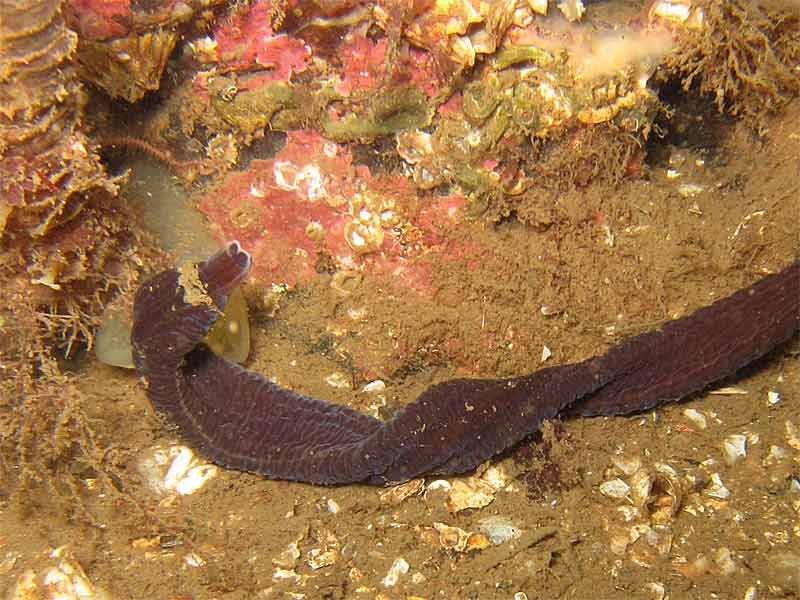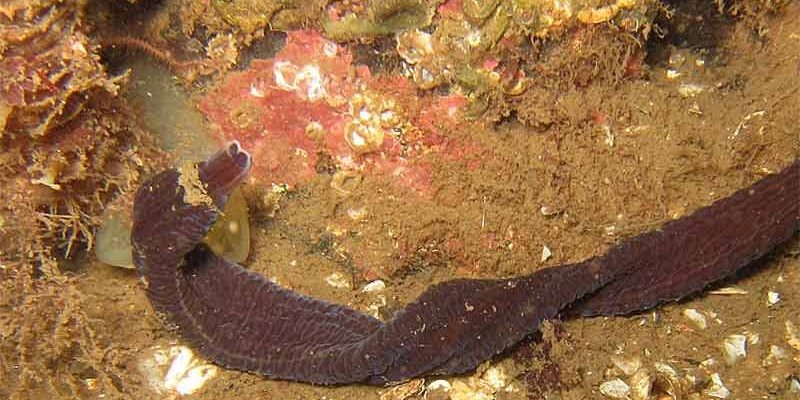
When it comes to documenting the movements of bootlace worms, using a reliable camera is essential. I recommend a compact action camera like the GoPro Hero series. These little guys are designed to capture immersive footage, even underwater, which is perfect for observing those elusive bootlace worms in their marine environments. Imagine setting up your camera to record their graceful sways while you’re sipping coffee at the shore, almost like a nature documentary, but it’s your own!
Understanding Bootlace Worms
Bootlace worms, scientifically known as *Lineus longissimus*, are among the longest animals on Earth. They can reach astonishing lengths, sometimes exceeding 30 meters! These creatures reside in the ocean, often found in tidal pools or under rocks. Their unique body structure consists of a long, soft body with a ribbed appearance, which helps them maneuver through their environment.
Here’s the thing: bootlace worms aren’t your everyday garden variety. Their movements are a natural blend of elegance and purpose. They use a combination of muscular contractions and wave-like motions to propel themselves through water and sediment. By understanding their behavior, we can appreciate the complexity of marine ecosystems and the role these worms play in them.
You might be wondering why we should document their movements. Well, like many marine organisms, bootlace worms contribute to the food web, and studying them can help scientists understand environmental changes. Plus, there’s just something inherently cool about watching these ancient creatures in action!
Choosing the Right Camera
Selecting the right camera is crucial for documenting bootlace worms effectively. Action cameras, like the GoPro Hero, are popular choices because they are durable, waterproof, and can capture high-definition video. But what makes them so special for this task?
– **Durability**: Bootlace worms live in rugged environments, so your camera needs to withstand wet conditions.
– **Versatility**: An action camera can be mounted on various surfaces, making it easier to position for the best angle.
– **Portability**: They’re lightweight and easy to carry, allowing you to document on the go.
If you’re considering alternatives, a compact DSLR with a macro lens can work wonders when you want to get really close while still having that clarity. The difference comes down to what you want to focus on: broad movements or intricate details of the worms.
Setting Up Your Camera
Once you’ve chosen your camera, the next step is setting it up properly to document the bootlace worms. Here’s a simple guide to help you get started:
1. **Location**: Find a suitable site where bootlace worms are likely to be found, such as intertidal zones. Observe the tides; low tide is your best bet.
2. **Stability**: Set your camera on a tripod or a stable surface. Movement can cause blurry footage, so stability is key. If you’re using an action camera, consider a mount that allows you to keep it submerged without risk.
3. **Lighting**: Natural light is often best for outdoor shoots. Early morning or late afternoon provides soft lighting that can enhance your footage. If it’s too dark, you might consider using an external light source.
4. **Distance**: Position your camera close enough to capture the worms in detail but not so close that you disturb their environment. This balance is crucial for getting authentic footage.
Don’t forget to check your battery life and memory space! Nothing’s worse than getting the perfect shot and then realizing your camera is out of juice.
Capturing Footage: Techniques and Tips
Now that your camera is set up, it’s time to capture the enchanting movements of bootlace worms. Here are some techniques to keep in mind:
– **Slow Motion**: If your camera supports slow-motion recording, use it! Bootlace worms move gracefully, and slowing down their movements can reveal fascinating details. Imagine watching them undulate like waves in slow motion.
– **Time-Lapse**: Setting up a time-lapse can show how bootlace worms interact with their environment over time. You’ll get to see their movements in a condensed format, which can highlight behaviors not easily observed in real time.
– **Experiment with Angles**: Don’t be afraid to change your camera angles. Different perspectives can provide unique insights into their behavior. Try shooting from above or below to see how their movements differ in various positions.
Remember, patience is key. You might have to wait for a while to capture the perfect moment. But trust me, when you finally get that ideal shot, it’s incredibly rewarding!
Editing Your Footage
Once you’ve gathered your footage, it’s time to edit. Editing allows you to highlight the most captivating moments of those bootlace worm dances. Here are some handy tips:
– **Trim Unnecessary Clips**: Remove any footage that doesn’t showcase the worms’ movements. Keeping only the best bits will make your final video more engaging.
– **Add Music or Narration**: Feel free to include a soundtrack that complements the visuals. Alternatively, narrating your observations can provide insights and context for viewers.
– **Use Slow Motion and Speed Up Techniques**: Just like during filming, you can enhance the movement of your subject during editing. Speed up the footage for a quick overview or slow it down to emphasize those intricate movements.
– **Color Correction**: Adjust brightness and contrast to ensure the worms stand out against their background. This can make your footage more eye-catching.
Editing can transform your raw footage into a polished presentation that’s both informative and entertaining.
Sharing Your Findings
Once you finalize your video, it’s time to share what you’ve learned about bootlace worms! Sharing not only spreads knowledge but also connects you with others who have similar interests. Here’s how to get started:
– **Social Media**: Platforms like Instagram, Facebook, or TikTok are great for sharing short clips. Use relevant hashtags, like
– **YouTube**: If your footage is longer or you want to create a full documentary, YouTube is the perfect platform. You can also engage with viewers through comments, answering questions, and sharing insights.
– **Scientific Communities**: If your findings are particularly interesting or groundbreaking, consider sharing your footage with scientific communities or local marine biology forums. You never know who might be doing similar research!
By sharing your work, you encourage others to explore the wonders of marine life. Plus, who knows? Your footage might inspire someone to embark on their own adventures in nature!
Documenting bootlace worm movements with a camera is like unlocking a door to a hidden world of wonder beneath the waves. With the right equipment and a bit of patience, you can capture the beauty of these long, flowing creatures and share their story with others. From the initial setup to editing your footage, each step takes you deeper into understanding the intricacies of marine life.
So grab your camera, find a spot near the shore, and start filming. You’re not just capturing images; you’re documenting a piece of nature that many have yet to see. Plus, you might just find that this experience leads to newfound respect for the delicate balance of our marine ecosystems. Happy filming!

